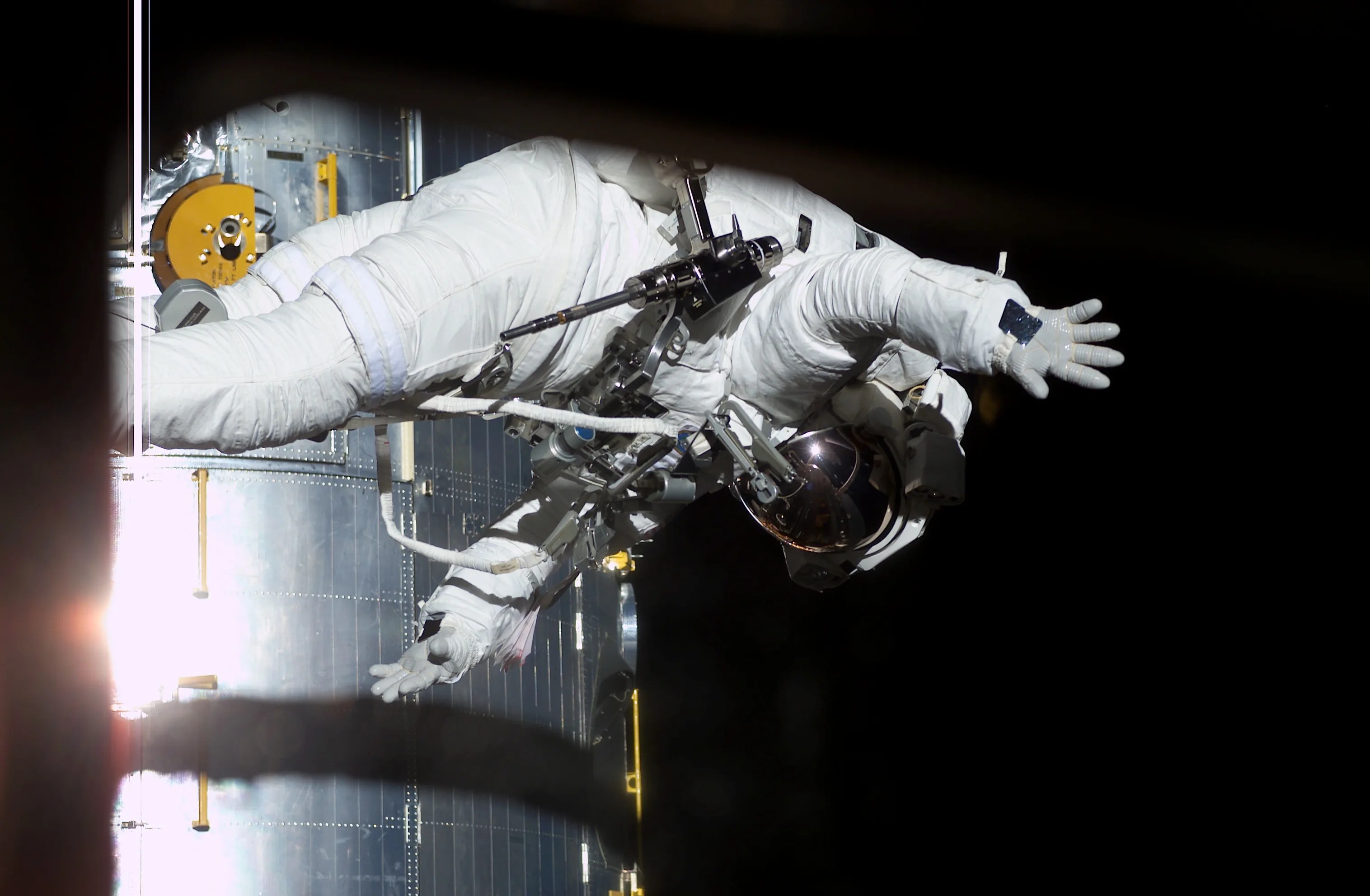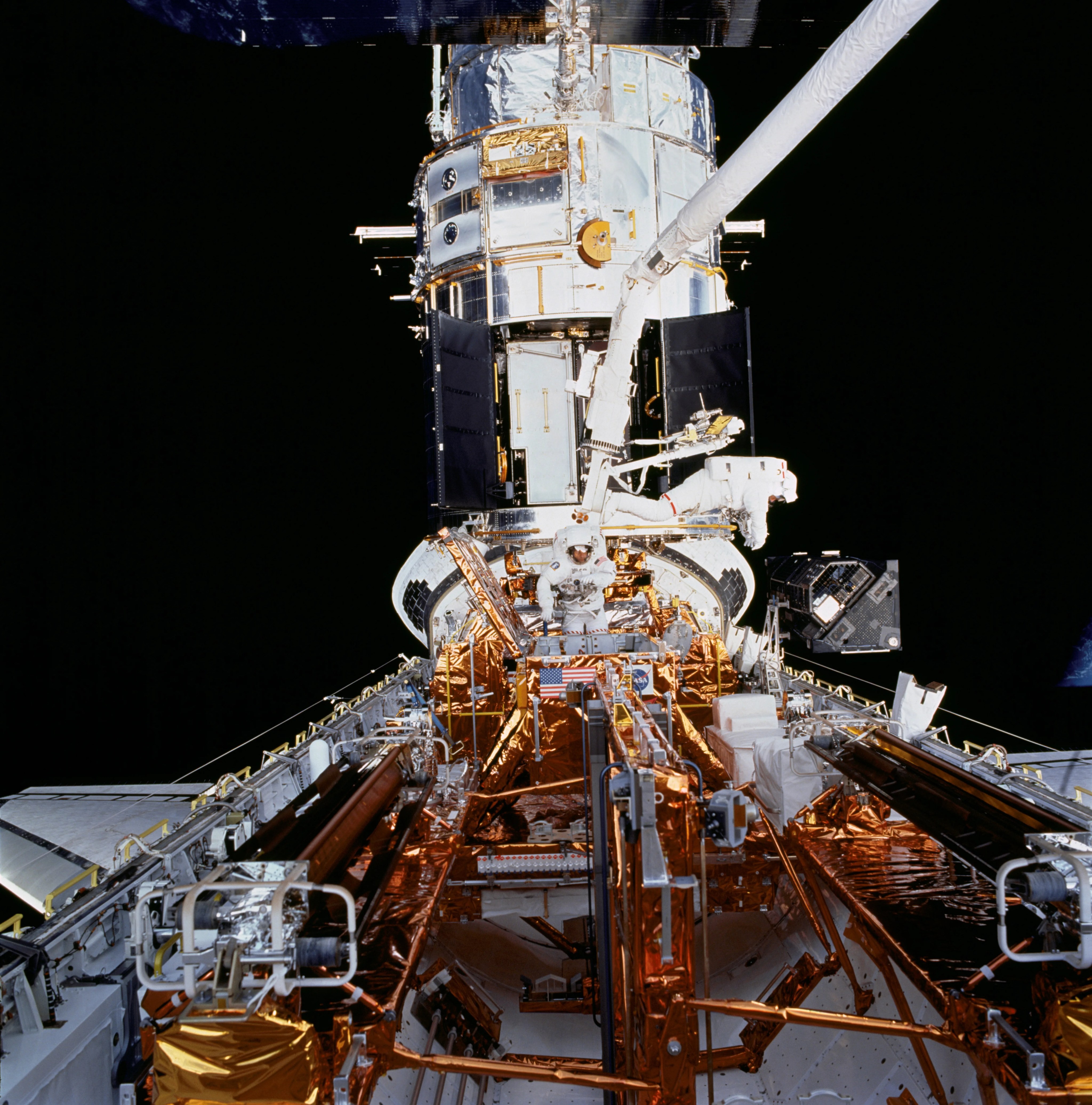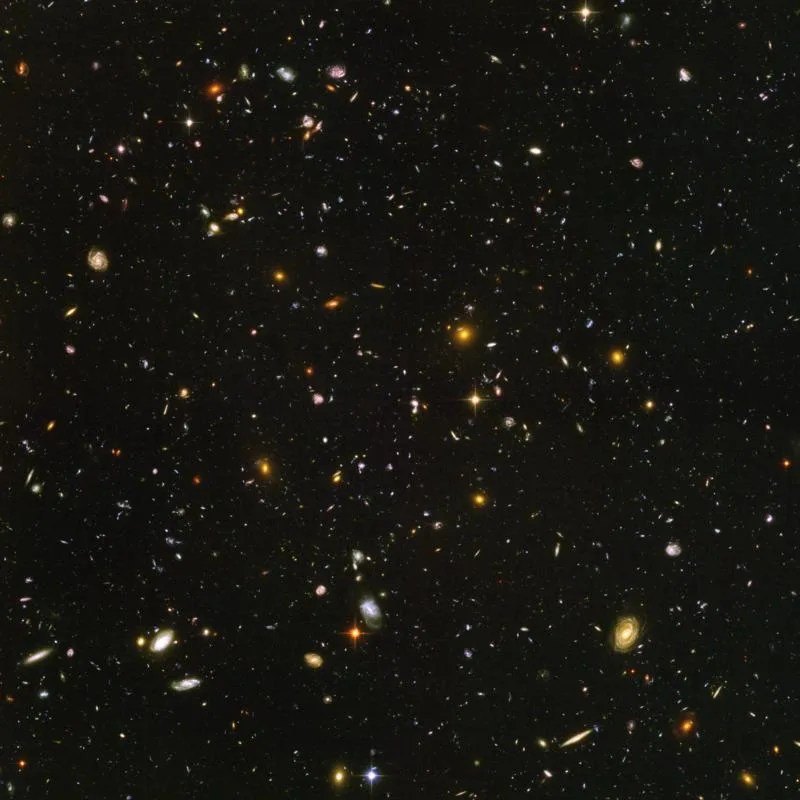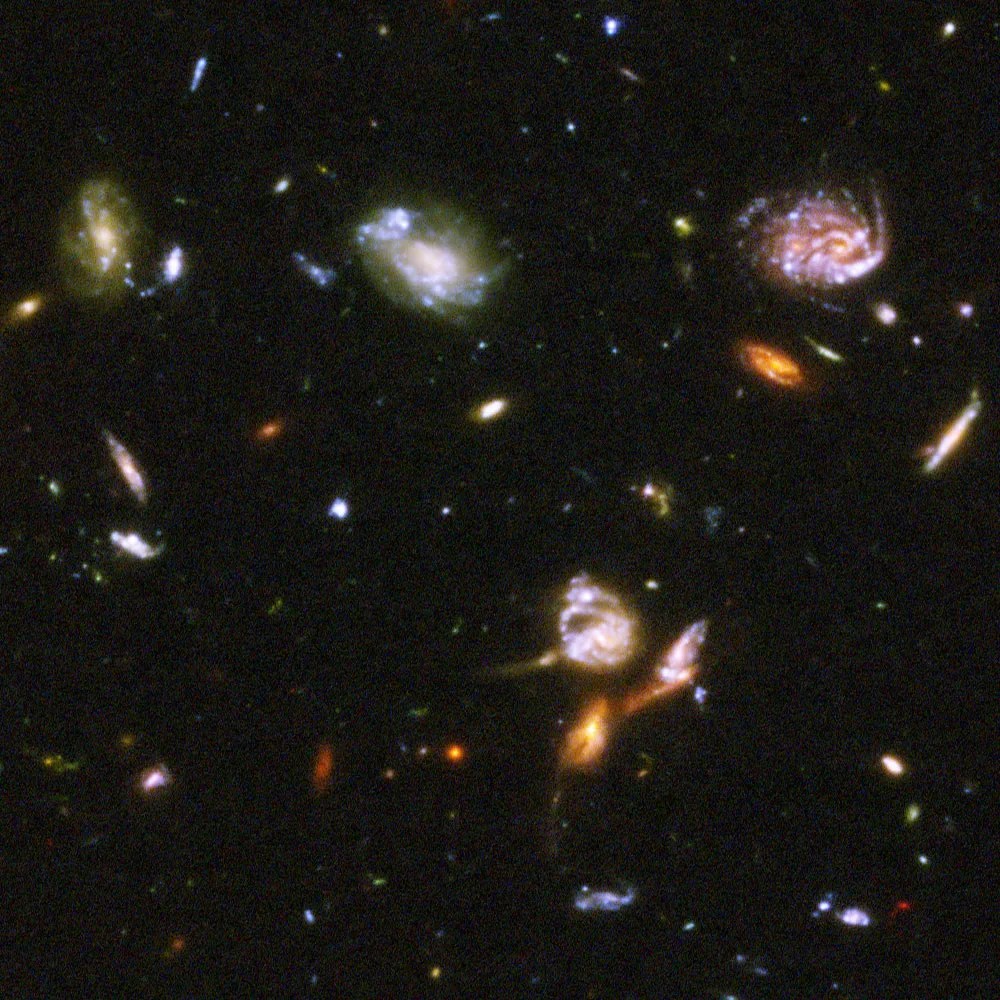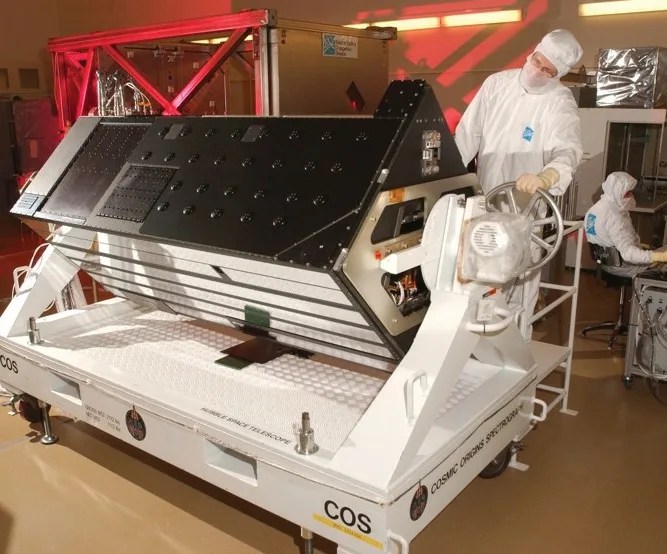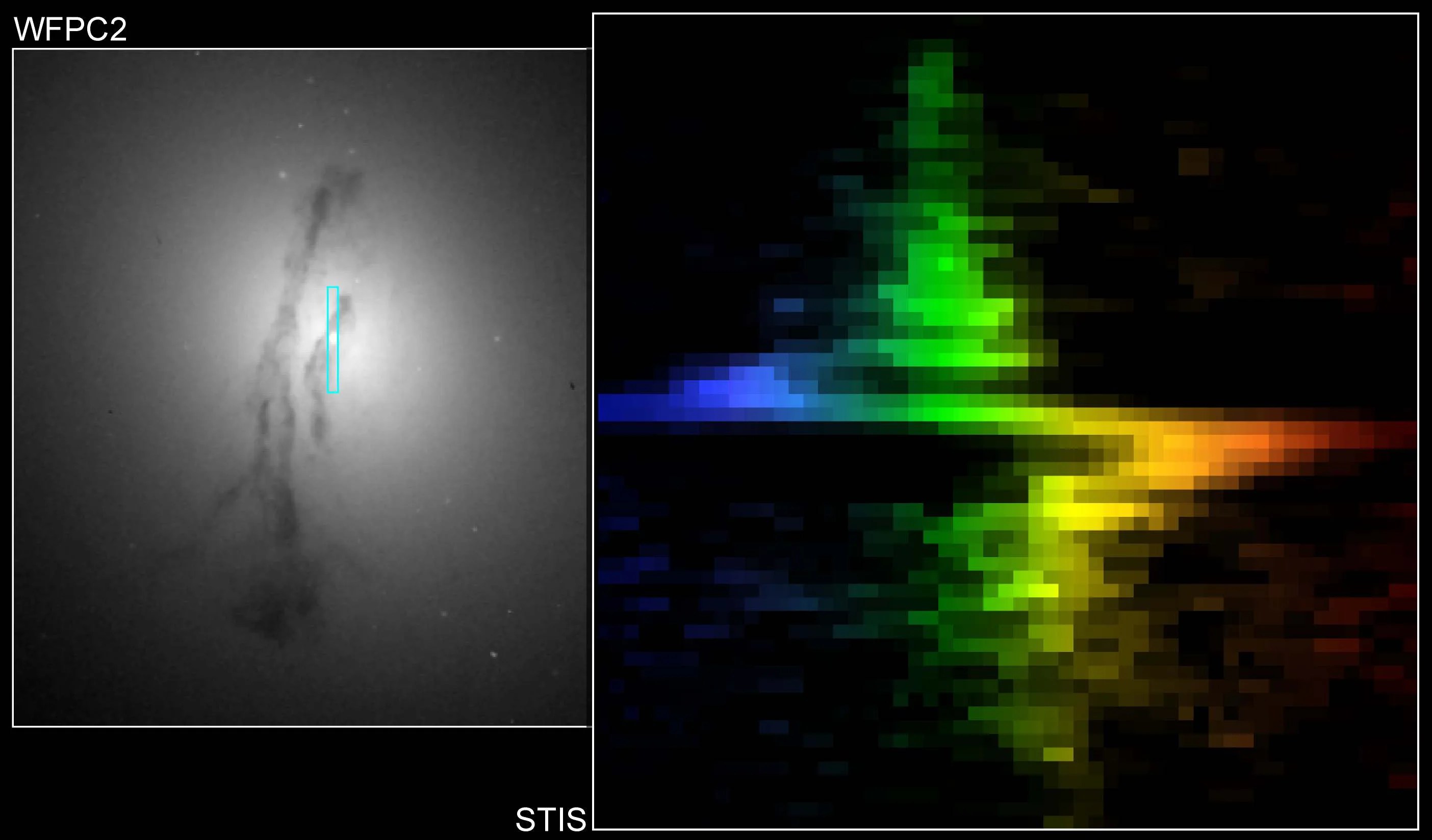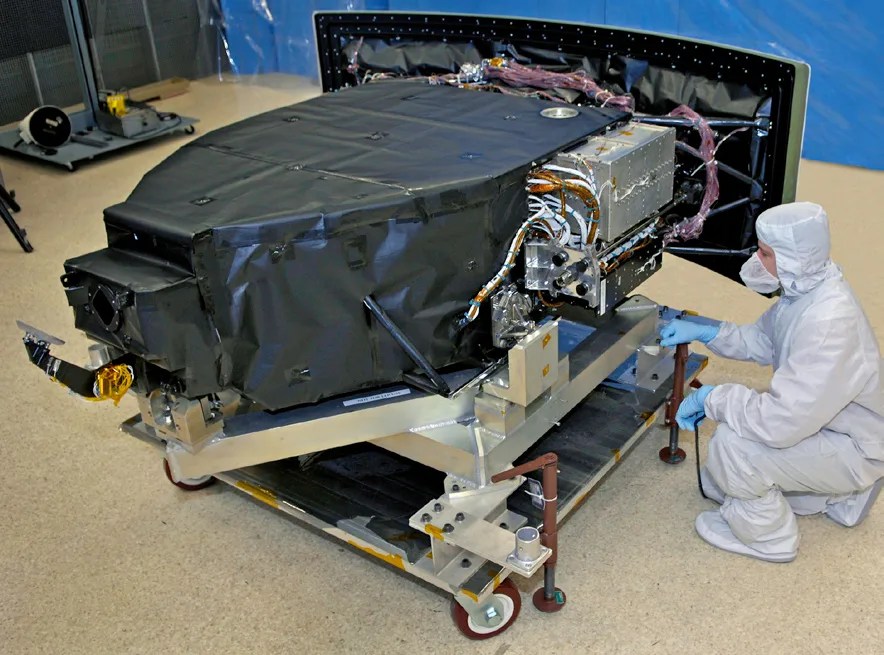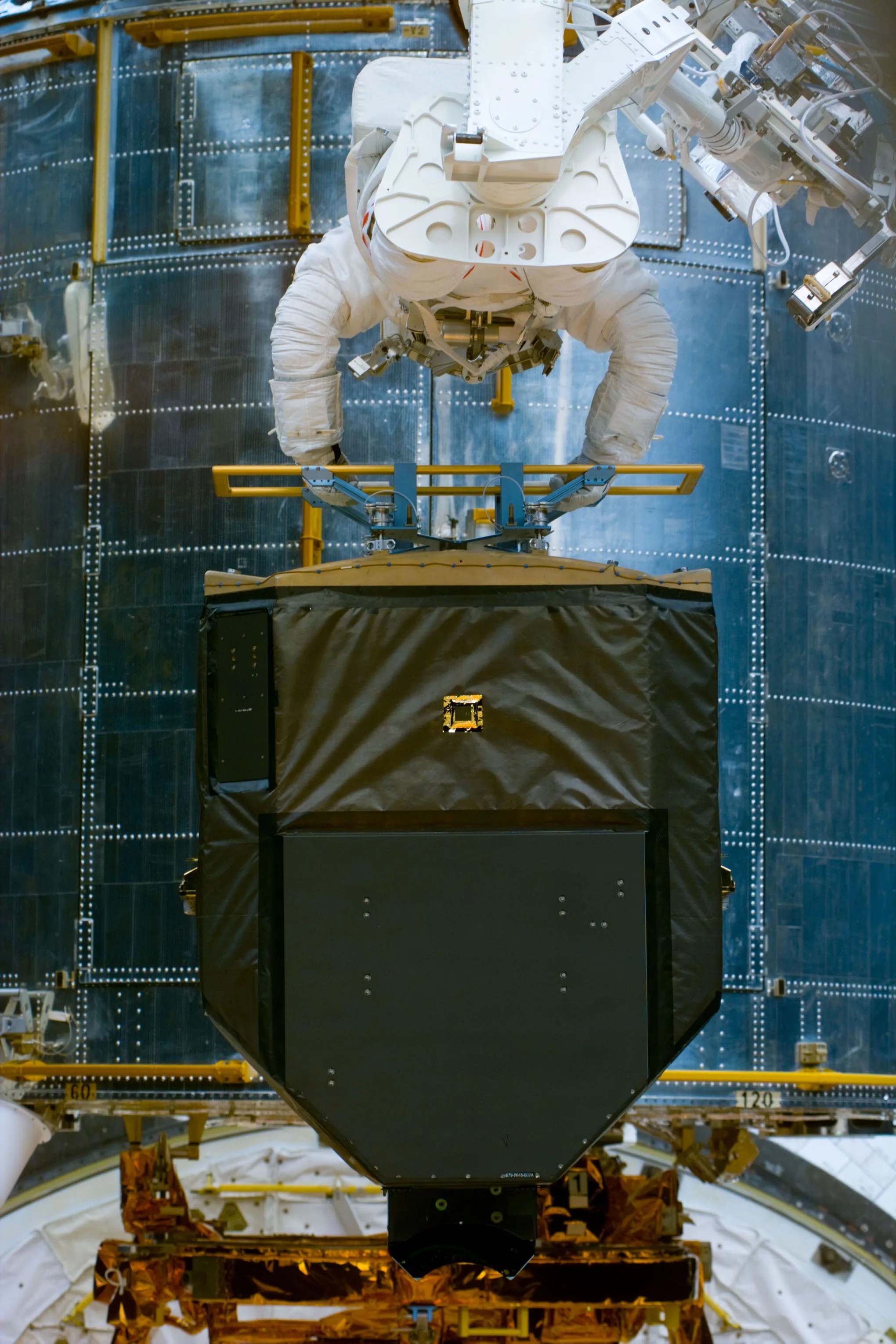Design
Advanced Camera for Surveys
The Advanced Camera for Surveys (ACS) was installed on the Hubble Space Telescope during Servicing Mission 3B in 2002. An electronics failure in January 2007 rendered the two most-used science channels inoperable. Astronauts during Servicing Mission 4 repaired the Wide Field Channel (WFC), the workhorse responsible for 70 percent of the pre-2007 ACS science. The High Resolution Channel (HRC), however, could not be repaired.
Overview
ACS was primarily designed to survey large areas of the sky at various wavelengths with 10 times greater efficiency than the earlier premier Hubble camera, the Wide Field Planetary Camera 2 (WFPC2). For five years ACS consistently lived up to that promise. Many of the most extraordinary images from Hubble were taken with the ACS/WFC, most famously perhaps the Hubble Ultra Deep Field, still the deepest look of visible light from the early universe after galaxies had begun to form. The High Resolution Channel provided ultra-sharp views over a smaller field-of-view. It included an option for imaging faint objects around bright stars through a coronagraphic capability that blocks out light from bright sources. The Solar-Blind Channel (SBC) was designed to provide small field-of-view imaging in the far ultraviolet region of the spectrum. Following its installation on Hubble, the ACS became the observatory’s most heavily used instrument.
The Instrument
WFC and HRC have charge coupled devices (CCDs) for detectors. WFC has a 4,000-by-4,000-pixel format created by two adjacent 2,000-by-4,000 devices. The CCDs were optimized for sensitivity in the red region of the spectrum, and spectral coverage extends from about 3,500 angstroms in the blue, up beyond visible wavelengths to 1.1 microns (11,000 angstroms). The field of view is 202-by-202 arcseconds (arcsec).
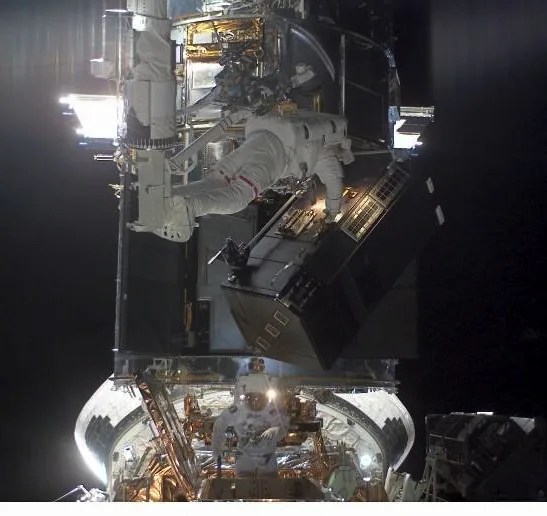
In the far ultraviolet, SBC uses a Multi-Anode Microchannel Array (MAMA), also used by the Space Telescope Imaging Spectrograph (STIS) on Hubble. SBC has a 1,000-by-1,000-pixel format, a field of 31-by-35 arcsec, and sensitivity from 1,150 angstroms to 1,700 angstroms. All the detector channels employ selectable filters mounted on rotating filter wheels to transmit the desired color of light to the detector for any particular image.
The ACS’ performance in visible to infrared light is ideal for surveying redshifted galaxies and clusters of galaxies at moderate to large distances across the universe. ACS and the Wide Field Camera 3 (WFC3) together enable the “best of all worlds” for astronomers, providing superb wide-field imaging over a broad range of wavelengths.
Mission Science Discoveries
Astronomers used ACS to probe our solar-system neighborhood as well as the distant universe.
Before NASA's New Horizons spacecraft visited Pluto, ACS captured the most detailed images ever taken of the dwarf planet. The images reveal an icy, mottled, dark molasses-colored world undergoing seasonal surface and brightness changes.
Astronomers used ACS to make what could be the first visible-light snapshot of a planet orbiting another star. The images show the suspected planet, named Fomalhaut b, as a tiny point source of light orbiting the nearby, bright southern star Fomalhaut, located 25 light-years from Earth. Previous ACS observations revealed a debris disk around the star.
Using ACS, astronomers also monitored light from a stellar outburst for several years as it continued to reflect off shells of dust surrounding the star, called V838 Monocerotis (V838 Mon). The phenomenon, called a light echo, is allowing astronomers to view continuously changing cross-sections of the dust envelope.
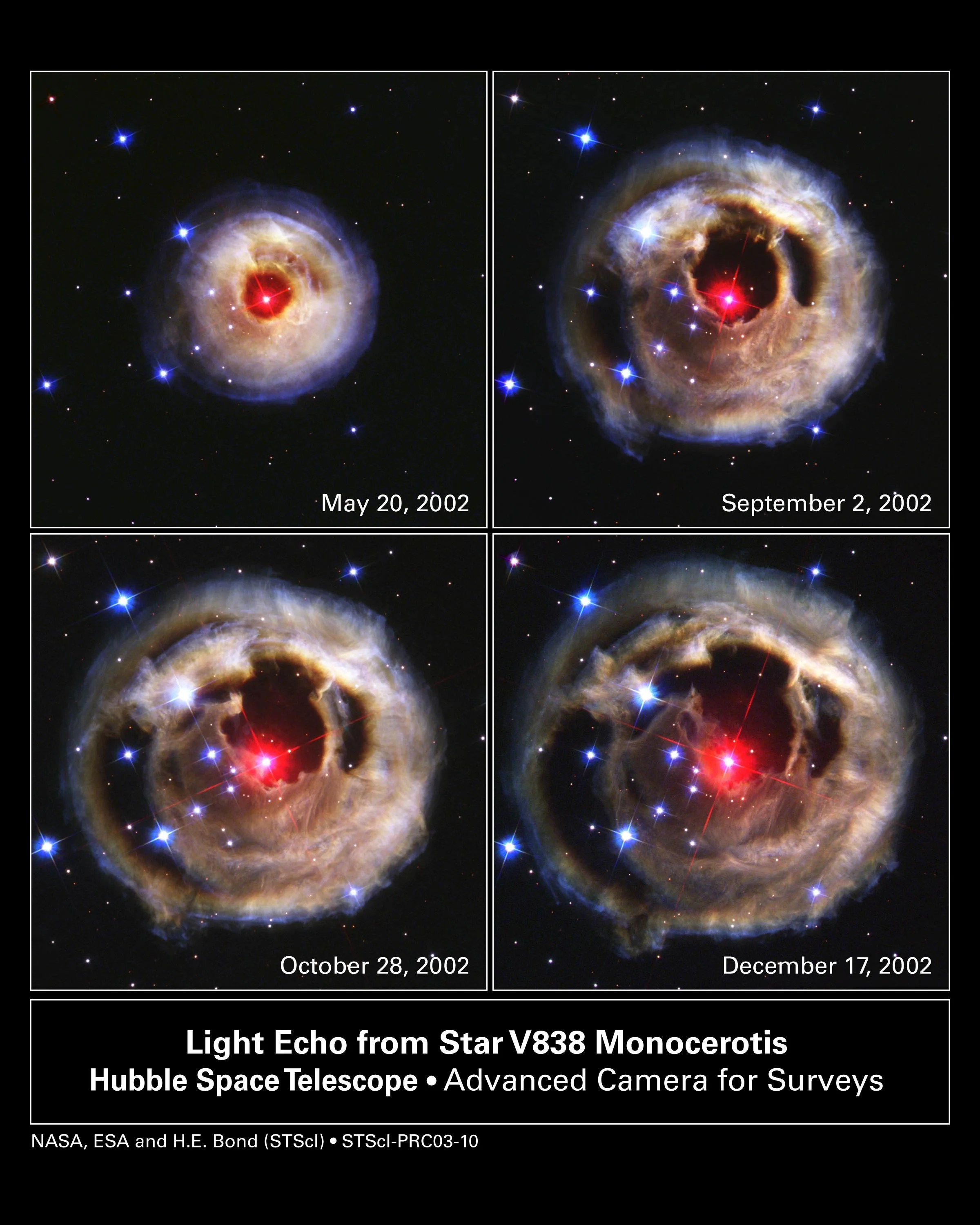
Measuring the tiny sideways motion of a grouping of stars in our neighboring Andromeda galaxy, astronomers using ACS have calculated that Andromeda and our Milky Way will collide head-on in another 4 billion years from now.
Astronomers teamed ACS and WFC3 to study galaxies farther back in time than ever before. Both instruments, combined, cover a broad wavelength range, from ultraviolet to near-infrared, and can take data simultaneously. In two surveys of the distant universe, Frontier Fields and the Cluster Lensing and Supernova survey with Hubble (CLASH), astronomers used ACS and WFC3 with a natural “cosmic lens” in space to find distant objects that otherwise would be too faint to be seen by telescopes alone. These so-called gravitational lenses are massive galaxy clusters whose powerful gravity magnifies and brightens the light of faraway objects behind them.
ACS and WFC3 observations also were used to map the amount of dark matter in the 25 galaxy clusters in the multi-wavelength CLASH survey. These maps are being used to test previous results that suggest that dark matter is more densely packed inside clusters than some models predict. This finding might mean that galaxy cluster assembly began earlier than commonly thought. Dark matter makes up the bulk of the universe’s mass, yet it can only be detected by measuring how its gravity warps space and tugs on visible matter.
Studying a galaxy cluster in the CLASH census, ACS and WFC3 spotted one of the earliest galaxies ever seen, more than 13 billion light-years away. The galaxy was observed just 420 million years after the Big Bang, when the universe was only one-thirtieth its current age. Astronomers are also using observations in the CLASH and Frontier Fields surveys to create more accurate dark-matter maps of the galaxy clusters in the census.
Servicing Mission 3B
Servicing Mission 3B was the fourth visit to Hubble. It included the installation of the Advanced Camera for Surveys, a powerful upgrade.
Learn More